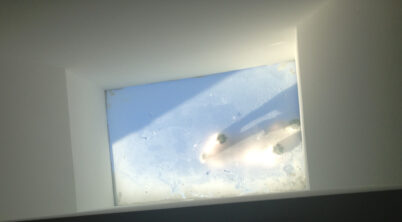Hip dysplasia, often a concern for many dog breeds, has also been seen in Pekingese, a breed known for their lion-like appearance and rolling gait. An inherited condition, hip dysplasia occurs when the hip joint, comprised of a ball and socket, does not develop properly, leading to looseness in the joint. This malformation can cause varying degrees of arthritis, pain, and mobility issues. Pekingese, despite their small stature, are not exempt from this condition, which can have a significant impact on their quality of life.
Symptoms of hip dysplasia in Pekingese may manifest differently depending on the severity of the condition and the individual dog. Commonly, owners may notice signs such as a reluctance to exercise, difficulty standing up or lying down, and an unusual gait – often described as wobbly or limping. There might also be signs of discomfort or stiffness when the dog moves, particularly after resting, or when attempting to climb stairs or jump onto furniture.
In assessing a Pekingese for hip dysplasia, vets will typically examine clinical signs and may suggest imaging tests like X-rays to confirm the diagnosis. Early detection and management are key in helping to ensure the dog maintains the highest possible comfort and mobility levels. Owners of Pekingese should be aware of these symptoms and seek veterinary advice if they suspect their pet may have hip dysplasia, as various treatments can help manage this condition effectively.
Table of Contents
Understanding Hip Dysplasia
Hip Dysplasia in Pekingese dogs is a hereditary condition affecting the skeletal system, particularly the joints. This genetically predisposed ailment is exacerbated by environmental factors and can lead to joint pain and mobility issues.
Causes of Hip Dysplasia
Canine Hip Dysplasia is often seen in larger breeds, such as German Shepherds, Golden Retrievers, Labrador Retrievers, Saint Bernards, and Great Danes, but it does not spare smaller breeds like the Pekingese. The root causes include:
- Genetic Predisposition: A high hereditary likelihood due to the dog’s lineage.
- Rapid Growth: Dogs that grow too quickly during their puppy years may be prone to developing joint abnormalities.
Anatomy of the Hip Joint
To understand how Hip Dysplasia affects a Pekingese, knowing the anatomy of the hip joint is essential:
- Ball and Socket Joint: This design allows for a wide range of motion. The ‘ball’ is the femoral head, and the ‘socket’ is the acetabulum of the pelvis.
- Ligaments and Cartilage: Support and cushion the hip joint, ensuring smooth movement.
Role of Genetics and Environment
Hip Dysplasia is not only hereditary but can also be influenced by environmental factors:
- Genetics: Certain DNA sequences are associated with a higher risk of developing Hip Dysplasia.
- Environment: Factors such as diet, exercise, and the dog’s weight can impact the severity of the condition.
Identifying Symptoms and Signs
In Pekingese dogs, hip dysplasia can manifest through specific clinical signs. Recognizing these can lead to early diagnosis and management, improving the quality of life for affected dogs.
Common Symptoms
- Pain: The dog may show signs of discomfort or express pain, particularly in the hip area.
- Lameness/Limping: A Pekingese might exhibit an irregular gait or a noticeable limp in one or both hind legs.
Behavioral Changes
- Reluctance to Use Stairs: Dogs with hip dysplasia may hesitate or avoid climbing up or down stairs due to pain.
- Decreased Activity: A distinct reduction in activity level or reluctance to play could indicate joint pain associated with hip dysplasia.
Physical Abnormalities
- “Bunny Hopping”: This particular type of gait, where a dog moves both hind legs together, is a classic symptom of hip dysplasia.
- Difficulty Standing: Observing challenges when rising from lying down can signal hip problems.
Diagnosis and Health Assessment

Diagnosing hip dysplasia in Pekingese requires a thorough approach that combines a skilled veterinary examination, precise imaging techniques, and an assessment of the dog’s overall health to guide appropriate treatment strategies.
Veterinary Examination
During the initial veterinary examination, a veterinarian will conduct a comprehensive physical exam to check for symptoms indicative of hip dysplasia. This typically includes observing the Pekingese’s gait for signs of limping or difficulty in movement, as well as a hands-on assessment where the vet checks for joint laxity, pain, or discomfort.
- Observations may include:
- Limping or hesitancy to move
- Muscle atrophy
- Painful reaction during hip manipulation
Imaging Techniques
Following the physical exam, imaging techniques such as X-rays (radiographs) are employed to visually assess the condition of the hips. X-rays can reveal the degree of joint malformation or osteoarthritis, providing critical details for diagnosis.
- Relevant imaging findings may show:
- Subluxation or full dislocation of the hip joint
- Signs of osteoarthritis, including joint space narrowing and bone spurs
- Comparison of hip joints for asymmetry
Assessment of Overall Health
An important aspect of diagnosing and managing hip dysplasia in Pekingese is evaluating their overall health status. Blood work is often performed to rule out other health conditions that can affect treatment. Specific concerns for the breed include dental disease, heart disease, particularly mitral valve disease, and progressive retinal atrophy, which could complicate hip dysplasia management.
- Blood work may include tests for:
- Complete blood count (CBC)
- Blood chemistry panel
- Heartworm disease
This comprehensive approach ensures a holistic view of the Pekingese’s health and aids in creating an informed treatment plan.
Note: Always consult with a professional veterinarian for the diagnosis and treatment of Pekingese hip dysplasia. The information provided here is for educational purposes only.
Treating Hip Dysplasia
Hip dysplasia in Pekingese necessitates a multi-faceted approach to treatment, involving both non-surgical and surgical methods, as well as alternative therapies to offer the best quality of life. It is crucial to address pain management, maintain joint function, and prevent further deterioration.
Non-Surgical Interventions
Non-surgical methods focus on managing symptoms and improving quality of life without immediate surgery. These include:
- Medication: Nonsteroidal anti-inflammatory drugs (NSAIDs) to reduce inflammation and pain from osteoarthritis.
- Weight Management: Maintaining a healthy weight to decrease stress on the joints.
- Exercise: Regular, gentle exercise to strengthen muscle mass without overexertion.
- Feeding & Diet:
- A balanced diet to support joint health.
- Inclusion of joint supplements such as glucosamine and chondroitin to aid cartilage repair.
- Physical Therapy:
- Customized exercise programs to enhance joint function.
- Use of therapeutic techniques to preserve or increase mobility.
Surgical Procedures
For dogs with severe hip dysplasia or when non-surgical interventions prove insufficient, surgical options may be considered:
- Total Hip Replacement (THR): The most effective surgical treatment, replacing the entire hip joint with prosthetic components.
- Femoral Head Ostectomy (FHO): Removal of the femoral head to alleviate pain, suitable for both young and mature dogs.
- Triple Pelvic Osteotomy (TPO): Recommended for younger dogs, this surgery corrects abnormal hip joint alignment before arthritis develops.
Alternative Therapies
Alternative therapies can complement traditional treatments and may consist of:
- Acupuncture: Stimulating specific points to reduce pain and improve joint function.
- Dietary Supplements: Additional supplements like omega-3 fatty acids may improve joint health.
- Chiropractic Adjustments: Some owners report improvements in mobility and pain reduction following chiropractic care.
Each treatment plan should be tailored to the individual dog’s needs by a veterinarian, considering the severity of the dysplasia, overall health, age, and lifestyle of the Pekingese.
Managing Pekingese Hip Dysplasia
Managing hip dysplasia in Pekingese involves a multifaceted approach that includes lifestyle adjustments, proper nutrition, and consistent monitoring. Specific, individualized strategies help mitigate the symptoms and maintain a dog’s quality of life.
Lifestyle Adjustments
Strategies to manage hip dysplasia in Pekingese should center on minimizing joint stress. Reduced exercise that avoids high-impact activities can help, alongside maintaining a healthy body weight to decrease pressure on the hips. Owners should provide soft bedding to support the hind legs and consider installing ramps to help the dog navigate stairs without additional strain on the joints.
- Exercise: Gentle, low-impact activities such as swimming or short walks.
- Weight Control: Regular weight check-ups and adjustments in food intake.
- Comfort: Soft bedding and accessibility modifications like ramps or steps.
Diet and Nutrition
A balanced diet is crucial for Pekingese with hip dysplasia, ensuring they don’t become overweight and exacerbate joint pain. Consult a vet for recommended dog food types, whether kibble or canned, that are formulated for joint health. Incorporation of joint supplements rich in glucosamine and chondroitin can aid in supporting joint cartilage.
- Dog Food: Specialized formulas for joint care.
- Supplements: Additives like glucosamine may support joint health.
- Caloric Intake: Adjusted according to the dog’s activity level to prevent weight gain.
Regular Monitoring
Regular vet visits are important for monitoring the progression of hip dysplasia and assessing treatment effectiveness. Male dogs may require specific attention, as size and muscle mass can influence the condition. Signs of increased joint pain or mobility issues should be reported to a vet promptly to adjust treatment options, which might include physical therapy, anti-inflammatory medications, or surgery for severe cases.
- Vet Check-Ups: Scheduled assessments of joint health and treatment plan.
- Observation: Noting changes in mobility or energy levels.
- Treatment Adjustments: Altered based on the progression of the disease and the overall health of the Pekingese.








